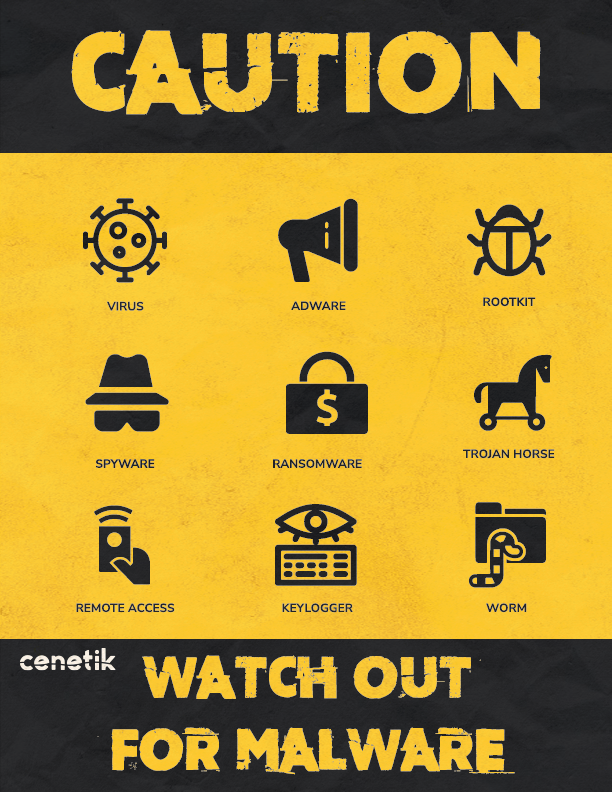
What is Malware?
Malware, short for malicious software, is any intrusive software created by cyber-criminals (often referred to as hackers) in order to steal data and harm or completely destroy computers and computer systems. Malware types that are frequently encountered include worms, Trojan horses, spyware, adware, and ransomware.
One of the greatest risks to the safety of your computer, tablet, phone, and other gadgets is malware. Viruses, spyware, ransomware, and other undesirable programs that are covertly placed on your system are all considered malware. Once malware has been installed on your device, thieves can use it to steal your personal information, send you unwanted or inappropriate advertisements, demand money to have their ransomware-encrypted data decrypted, and leave your device open to further malware infection. Here are some tips for identifying, removing, and avoiding malware.
Purpose of Malware
Malware is damaging software that attacks or corrupts your computer network. The goal of malware is to cause chaos and steal information or resources and attackers have different reasons for stealing your data; here are a few reasons:
- Financial gain – selling your intellectual property to a buyer.
- Take computer resources – utilize your computing power for malicious intent
- Intelligence and interference – looking for data like sensitive information like passwords or company secretes.
- Destruction or sabotage – trying to damage or destroy your computer/network.
- Disruption and blackmail – trying to make your device/network unusable by holding your computer/network hostage.
Signs of Malware
How do you know if your device is infected? There are a few signs that your devices are suffering from a malware attack; here is a few popular examples:
- Your device abruptly slows down, crashes, or displays weird error messages
- Your device will not restart or turn off
- won’t let you remove software
- serves up lots of pop-ups, inappropriate ads, or ads that interfere with page content
- You notice new toolbars, icons or new tabs/websites you didn’t open in your browser
- You notice your battery life runs out faster than it should
9 Types of Malware
Malware attackers use an assortment of virtual and physical means to spread malware that infects a device or an entire network. Here are 9 types of malwares to watch out for:
- Virus – is a type of executable program that replicates itself by modifying other computer programs and inserting its own code into those programs.
- Adware – called advertising-supported, it is a software that generates revenue for its developer by automatically generating online advertisements in the user interface.
- Rootkit – is a program that conceals its existence or that of other programs in order to grant unauthorized access to a computer or a portion of its software.
- Spyware – infiltrates a user’s computer, collects information about the user and the device, and transfers it to outside parties without the user’s permission.
- Ransomware – Until the victim pays the attacker’s ransom demand, ransomware threatens to publish or prevent access to data or a computer system, typically by encrypting it.
- Trojan Horse – a program that poses as a legitimate program while actually having malicious software hidden inside.
- Remote Access – Via a phishing email or a malicious website, remote access trojans (RAT) infect a target computer or device. A RAT gives an attacker complete remote control and high levels of access to a compromised system.
- Key Logger – Every keystroke made on the victim’s device is recorded by software and sent to the attacker.
- Worm – Without human activation, it can spread or self-replicate from one computer to another.
